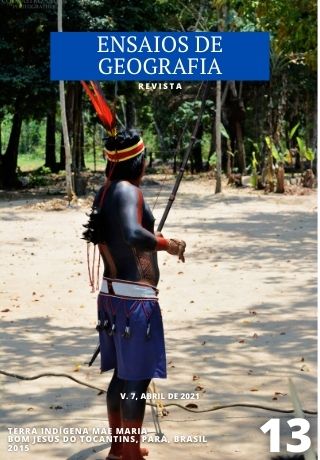v. 7 n. 13 (2021): Ensaios de Geografia

CAPA
Terra Indígena Mãe Maria, localizada no município de Bom Jesus do Tocantins, no sudeste do Estado do Pará, setembro de 2015.
Guerreiro indígena gavião da aldeia Kyikatêjê participando do jogo de arco e flecha nos jogos do mês de setembro de 2015. O povo indígena Gavião, estão compostos por três grandes grupos ou aldeias: Parkatêjê, Kyikatêjê e Akrãtikatêjê, reunidos na Terra Indígena Mãe Maria, localizada no município de Bom Jesus do Tocantins, no sudeste do Estado do Pará, desde finais da década de 1980. Como relata o site Povos Indígenas doBrasil: “Depois de uma traumática "pacificação", ocorrida na década de 1970, na qual perderam 70% da população, os Gaviões venceram a crise populacional e reconstruíram seu modo de vida”. Nesse contexto, de desencontros com o mundo ocidental, os Gaviões vêm reconstruindo suas tradições. Entre elas a Festa da Castanha, a qual se realiza no final de cada ano para comemorar a safra da Castanha do Pará; e a Corrida da Tora como forma de expressão cultural e esportiva entre as aldeias Gavião no mês de setembro. Foi, nesse contexto da realização da corrida da tora, que homens e mulheres do povo se reúnem para praticar as suas técnicas e habilidades com o arco e a flecha, momento que marca um ponto de encontros, papos sobre a vida, sorrisos e liberdade de um povo que ao longo dos últimos 30 anos vem se reconstruindo e posicionando territorial, política e culturalmente no sudeste paraense.
Ginno Pérez Salas
Pesquisador militante cholo peruano. Doutorando do Programa de Pós-Graduação
em Geografia da Universidade Federal Fluminense (UFF). Mestre em Dinâmicas
territoriais e Sociedade na Amazônia pela Universidade Federal do Sul e Sudeste do
Pará (UNIFESSPA).
Contato: driloperez84@gmail.com

